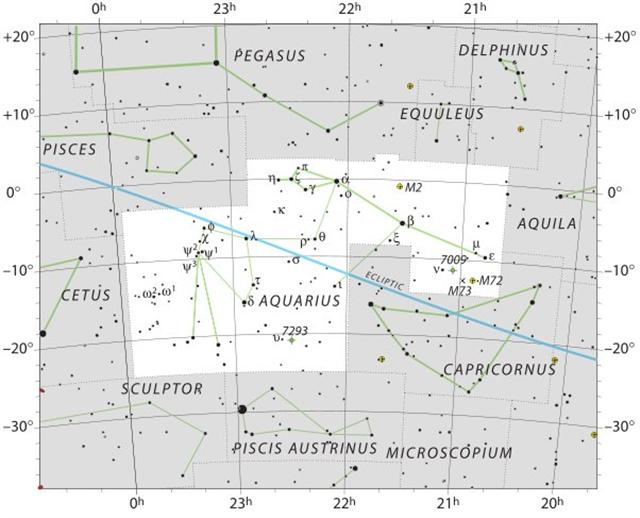4. The expression 'wet behind the ears' proves there is a connection in thought between water and ears. From Wikipedia I learn that the corresponding expression in Chinese is '(the) smell (of) milk is not dry (= gone) yet, 乳臭未乾), which suggests that the idea of dry is connected with the idea of going away. With the 'towel' of the Pegasus Square the wet season goes away. Our first picture of Mount Meru can now be approached with a better ground for understanding it:
The towel is waiting for Aquarius and the upper part of the rightmost ⅓ of the picture seems to serve as a rubric for what happens below, inside the great circle with a double rim. From Capricornus (the reversed goat head) via the Aquarian jar (drawn with a pair of legs) up to and including the lady with the Pegasus towel (to the left of which Sun is emerging) there is water (because the circle has a double rim). Time moves from right to left. There is one more sign to consider, viz. the form between the jar god and the blanket. Possibly it is meant to illustrate one of the fishes in Pisces:
Inside the double-rimmed water circle Mount Meru is tumbling down, surrounded by the celestial bodies in a state of chaos. Moon is easily identified because there is a rabbit (or hare) inscribed in one of the circles. I think the idea is the same as that described by Sahagun (cfr The Week), viz. to throw away into the water all which remained and reminded of the pair of old 'years': ... When it was evident that the years lay ready to burst into life, everyone took hold of them, so that once more would start forth - once again - another (period of) fifty-two years. Then (the two cycles) might proceed to reach one hundred and four years. It was called 'One Age' when twice they had made the round, when twice the times of binding the years had come together. Behold what was done when the years were bound - when was reached the time when they were to draw the new fire, when now its count was accomplished. First they put out fires everywhere in the country round. And the statues, hewn in either wood or stone, kept in each man's home and regarded as gods, were all cast into the water. Also (were) these (cast away) - the pestles and the (three) hearth stones (upon which the cooking pots rested); and everywhere there was much sweeping - there was sweeping very clear. Rubbish was thrown out; none lay in any of the houses ... At the end of the first cycle (52) everyone took hold to deliver next such cycle and they bound the first cycle. At the end of the 2nd cycle (2 * 52 = 104) - after One Age - the same procedure took place. But it is not clear whether they put out the fires etc only at the end of One Age or if the same procedure was used also after the first cycle. I guess it was necessary to wait until the end of the 2nd cycle. At the end of the first cycle should stand Jupiter and at the end of the second cycle should stand Saturn. Father Light (Jupiter) ends the first cycle and Father Night (Saturn) the second cycle. |

